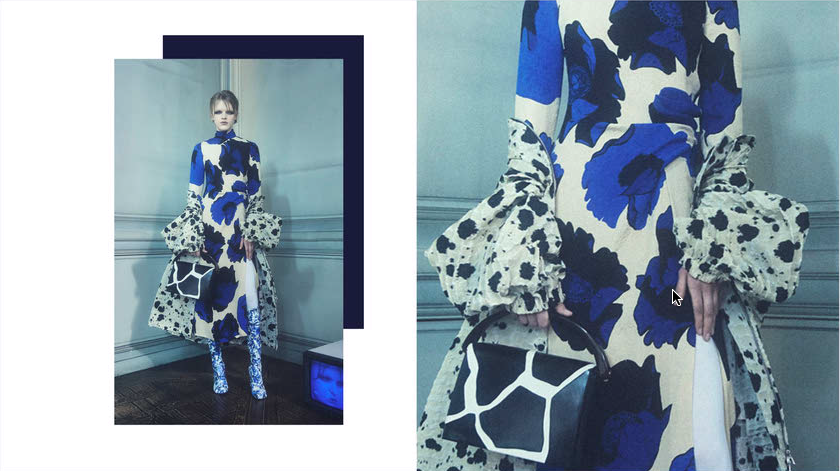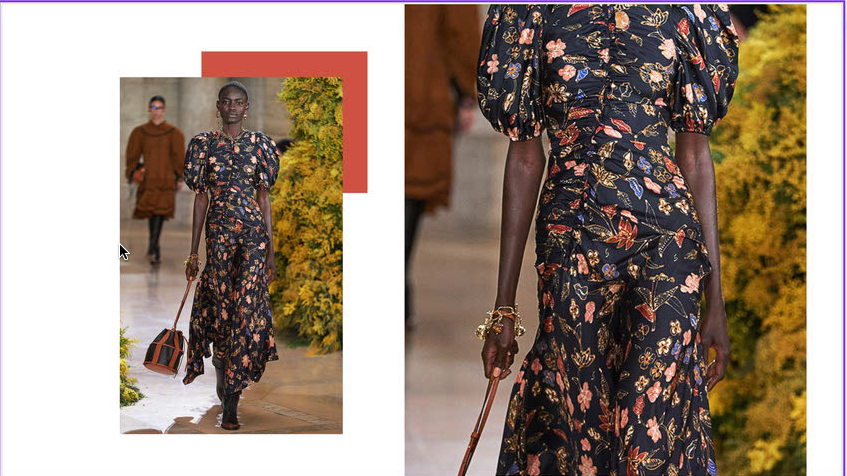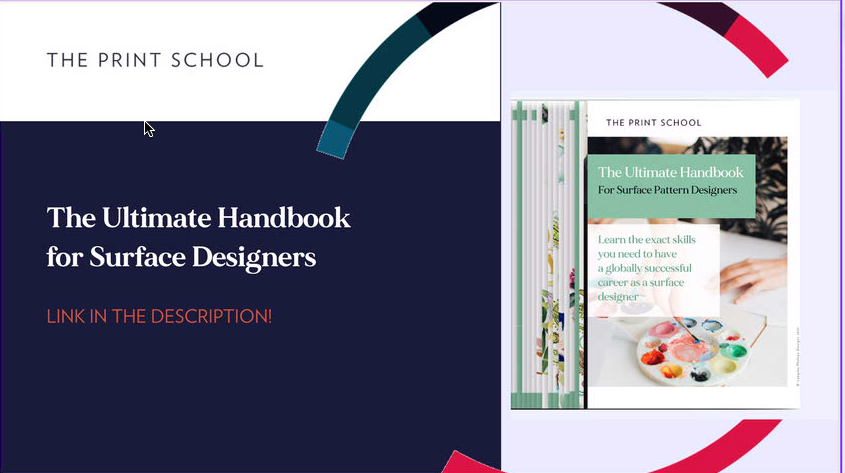How to design fabric for high-end brands
May 12, 2022
Written and produced by Erin, Digital Design Media Manager.
Dream of designing prints for the big guns of fashion? Your Staud, your See by Chloe, your Stine Goya? In this little vid (just five minutes long!) we show you how to design specifically for the high-end market. What do these brands look for in a print design in 2022? Find out now.

If you love fashion, you won’t need us to explain the difference between a designer brand and a high street or commercial one. For those of you who aren’t quite sure, think: Missoni versus Mango. Burberry versus Banana Republic. Givenchy versus Jigsaw.

Of course, there are MANY differences between the high and low. The prices, the branding and the heritage, just to start.
What you might not be so clear on, is how the print designs in these two fashion markets differ. And if you’re a print designer hoping to cater to both the high and low, you’ll need to know exactly how.
Luckily, we at The Print School have you covered!
If you watched our video, How to Design Fabric for High Street Fashion Brands, you’ll already know what makes a commercial print design. If not, you should head over there later on.
Today is all about the high-end market.
High-end brands play a role in driving fashion trends.
We look to them for bold new ideas; inspiration and direction. They are aspirational and revered. And befittingly, so are the print designs they feature.
So how does this affect your design process?
Our creative director, Bec says that in designing for the high-end customer, “There’s always something a little odd that takes [a design] away from being mainstream and ‘safe’” Here are 5 ways to do exactly that.
1. Use unexpected colors
A fresh, (even surprising) palette, will give your design an instant high-end lift.
The right colour palette can turn even the most basic floral design into something brilliant.
Richard Quinn loves a vintage rose, but by using this loud, highly-saturated colour palette, the look is edgy and exciting.
2. Blow up the scale
In high end print design, bigger is better. Or at the very least, more luxurious.
Here Dries Van Noten makes an easy, screen printable floral design interesting in a large scale. Imagine this same print in half scale… it would be less impressive, right? More akin to a commercial-style print.

Jason Wu uses the same strategy here, balancing large areas of abstract positive shapes with large areas of open space.
3. Be free with your layout.
Because a designer garment sells for a higher price point, manufacturers aren’t so concerned about fabric wastage. They can engineer a print to a garment much easier than a commercial brand, which has lower margins.
This Oscar de La Renta dress boasts a beautiful, feminine floral - a style that would naturally appeal to the wider mass market.
But what makes it NOT commercial? It’s the layout. If you break it down into sections, each area of the design has a different layout. And you can see different floral arrangements in each one, rather than the same three arrangements in an even, all over toss.
4. Use a muse
When you’re stumped for design ideas, think of a person who’s style you admire. It can be anyone from Jackie Kennedy to Bella Hadid. Use their style as your guide. Think about whether they would wear your print, and the type of clothing they would wear it on. It will take your work to a place you might not otherwise have gone.

5. Ignore the rules
Now forget everything you know about designing for the high end market!
Because dresses like this Ulla Johnson break every rule. The scale is mid-size and the layout is an even tossed layout, with a standard type repeat. It goes to show designers don’t always take print to the extreme. A commercial-style print works in this instance because it’s used on beautiful fabric and an interesting shape.
So experiment! Have fun with layout, colour and scale. It is important to take risks, and pour your most creative ideas into your high end prints. Because high end designers see themselves as risk takers in the fashion world, and as a result, they want to work with risk-taking print designers.
And if you haven’t got it yet, grab our freebie, The Ultimate Handbook for Surface Pattern Designers. Learn the exact skills you need to have a globally successful career as a surface designer.
You might also like...
How to design fabric for high-street fashion brands
My design journey: a slow fashion entrepreneur
The key to drawing better blooms
STAY IN THE KNOW
RECEIVE TREND DIRECTION, INDUSTRY INSIGHTS, BONUS TIPS AND TUTORIALS EVERY FORTNIGHT
We hate SPAM. We will never sell your information, for any reason.






